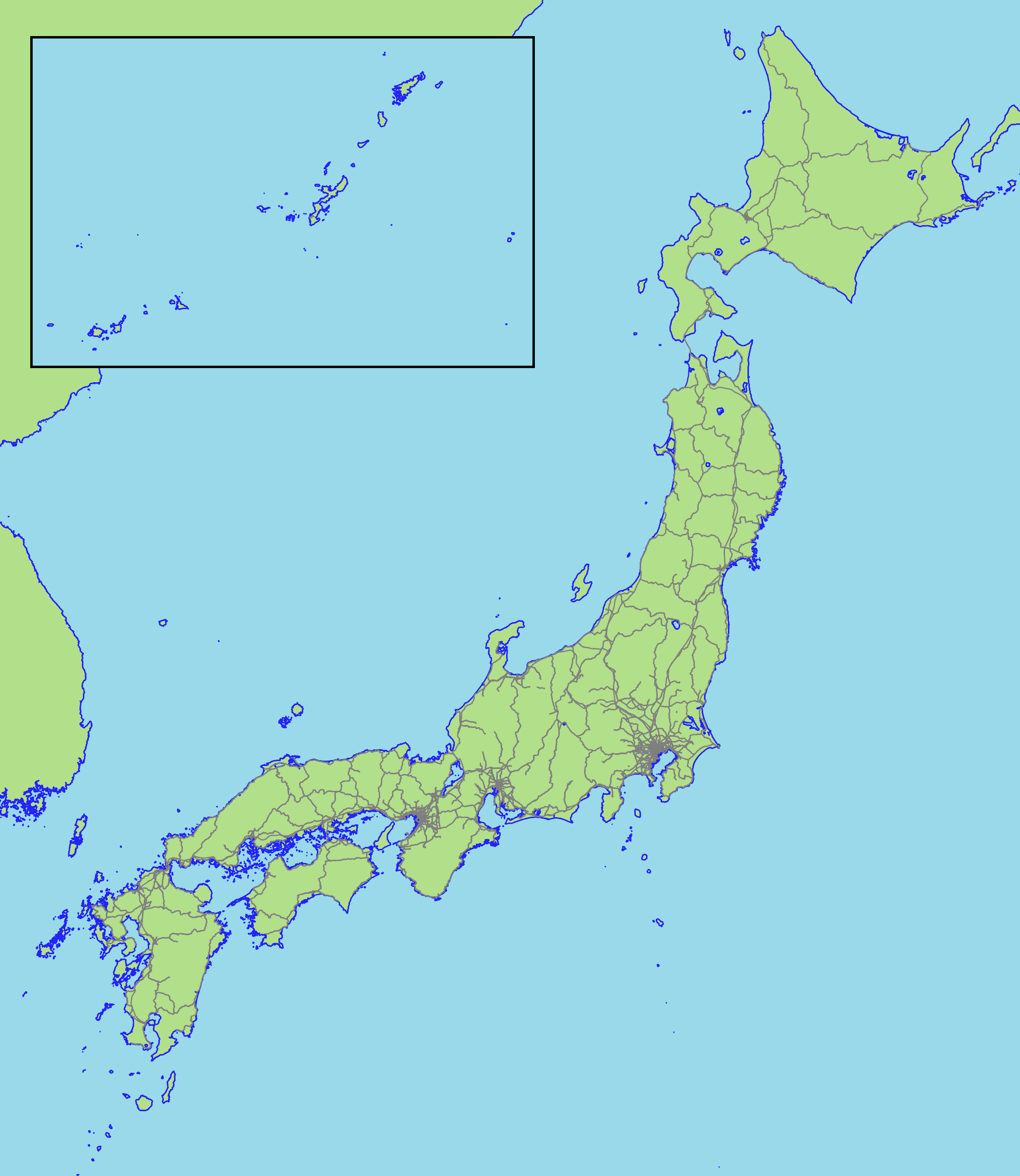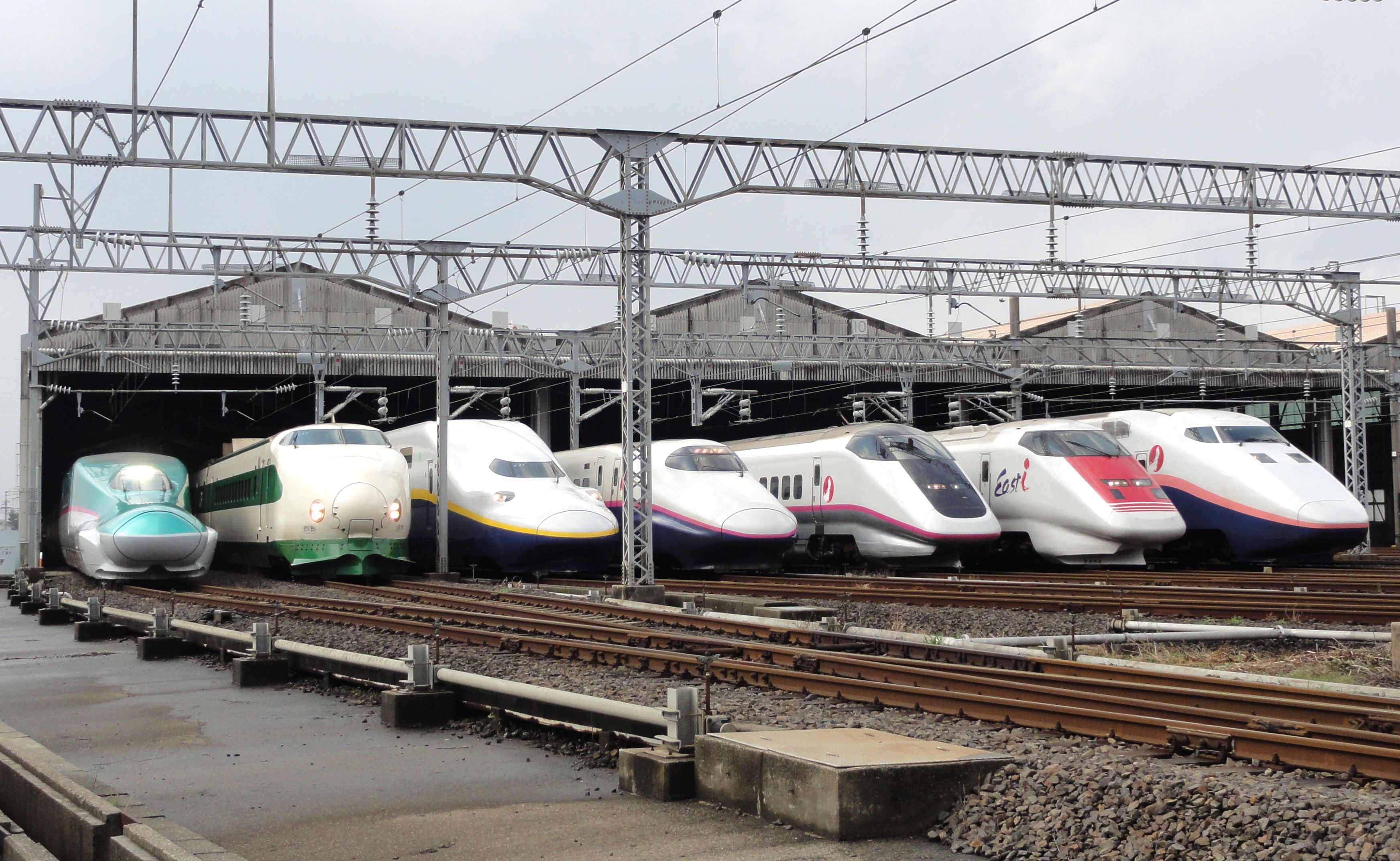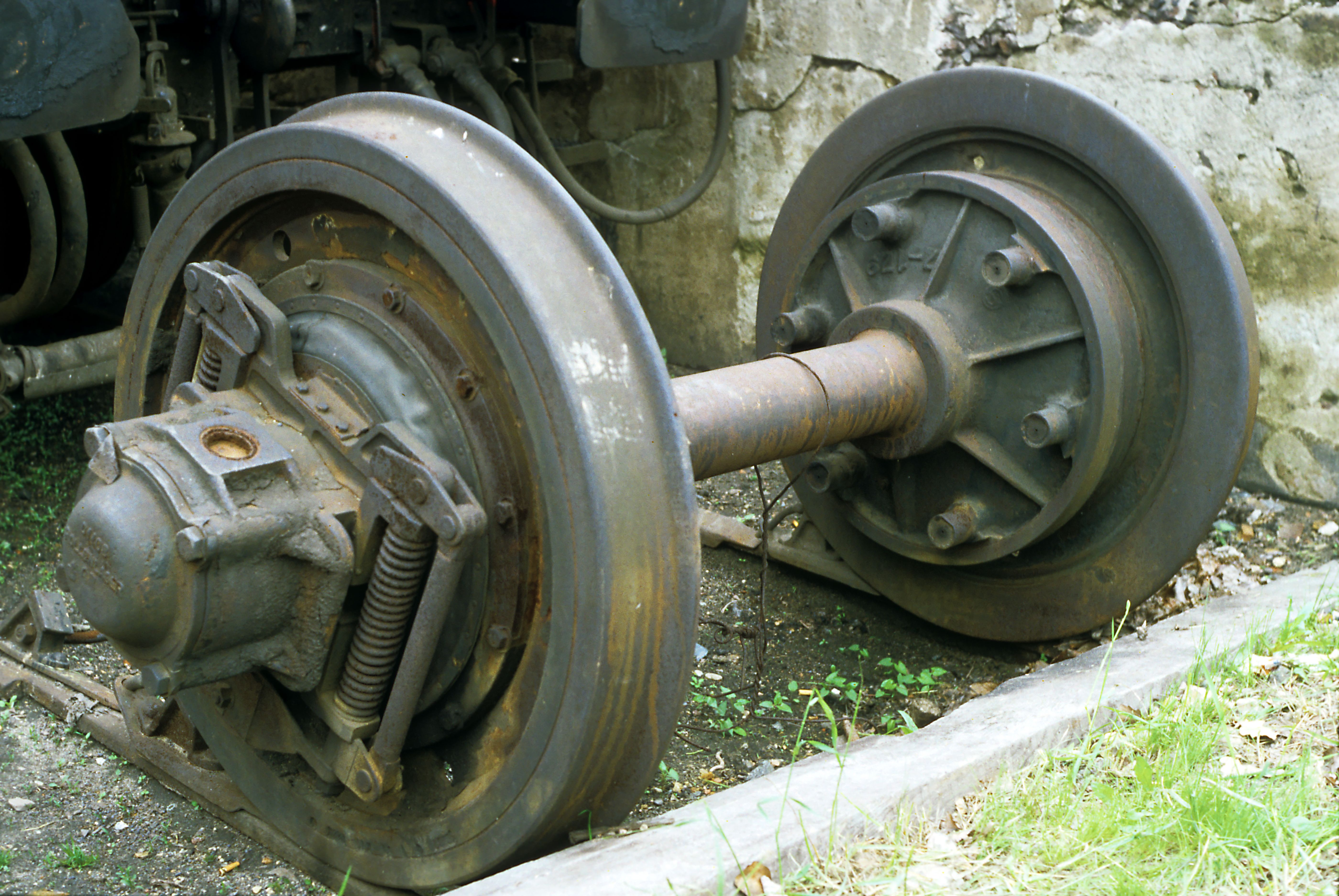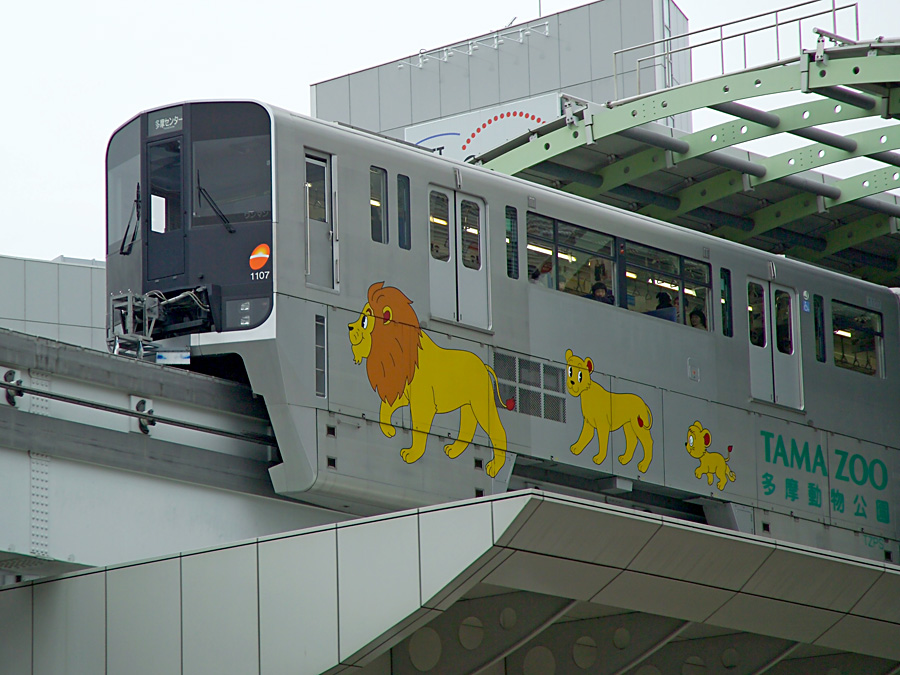|
Railway Technical Research Institute
, or , is the technical research company under the Japan Railways group of companies. Overview RTRI was established in its current form in 1986 just before Japanese National Railways (JNR) was privatised and split into separate JR group companies. It conducts research on everything related to trains, railways and their operation. It is funded by the government and private rail companies. It works both on developing new railway technology, such as magnetic levitation, and on improving the safety and economy of current technology. Its research areas include earthquake detection and alarm systems, obstacle detection on level crossings, improving adhesion between train wheels and tracks, reducing energy usage, noise barriers and preventing vibrations. RTRI is the main developer in the Japanese SCMaglev program. Offices and test facilities Main office * 844 Shin-Kokusai Bldg. 3-4-1 Marunouchi, Chiyoda-ku, Tokyo 100-0005, Japan Research facilities * Kunitachi Institute - 2-8-3 ... [...More Info...] [...Related Items...] OR: [Wikipedia] [Google] [Baidu] |
Foundation (nonprofit Organization)
A foundation (also a charitable foundation) is a category of nonprofit organization or charitable trust that typically provides funding and support for other charitable organizations through grants, but may also engage directly in charitable activities. Foundations include public charitable foundations, such as community foundations, and private foundations, which are typically endowed by an individual or family. However, the term "foundation" may also be used by such organizations that are not involved in public grantmaking. Description Legal entities existing under the status of "foundations" have a wide diversity of structures and purposes. Nevertheless, there are some common structural elements. * Legal requirements followed for establishment * Purpose of the foundation * Economic activity * Supervision and management provisions * Accountability and auditing provisions * Provisions for the amendment of the statutes or articles of incorporation * Provisions for the dissol ... [...More Info...] [...Related Items...] OR: [Wikipedia] [Google] [Baidu] |
Minami-Uonuma, Niigata
is a city located in Niigata Prefecture, Japan. , the city had an estimated population of 55,354 in 20,047 households, and a population density of 96.1 persons per km². The total area of the city was . Geography Minamiuonuma is situated in a valley in a mountainous region of Niigata Prefecture known as “Snow Country” because of the heavy snowfall in winter. The city is bounded by Uonuma and the Echigo-Sanzan mountains in the north, and Yuzawa, a popular ski resort town, in the south. The Uono River flows through most of the city. The city and its surrounding areas are dotted with many onsen (hot springs) and ski resorts, making it a popular destination in winter. There are also a large number of paddy fields, and popular seasonal fruit like watermelon, as this is part of the major ''koshihikari'' rice-growing region in Japan. Parts of the city are within the borders of the Jōshin'etsu-kōgen National Park. Surrounding municipalities *Niigata Prefecture **Uonuma **Tōka ... [...More Info...] [...Related Items...] OR: [Wikipedia] [Google] [Baidu] |
Rail Transport In Japan
Rail transport in Japan is a major means of passenger transport, especially for mass and high-speed travel between major cities and for commuter transport in urban areas. It is used relatively little for freight transport, accounting for just 0.84% of goods movement. The privatised network is highly efficient, requiring few subsidies and running with extreme punctuality. Overview Rail transport services in Japan are provided by more than 100 private companies, including * Six Japan Railways Group (JR) regional companies (state owned until 1987) which provide passenger services to most parts of Hokkaido, Honshu, Shikoku, and Kyushu; * The nationwide JR freight company; and * 16 major regional companies which provide railway services as part of their corporate operations. There are also dozens of smaller local private railways. Many of the private rail companies rank among the top corporations in the country. Railways were built by private corporations developing integrated ... [...More Info...] [...Related Items...] OR: [Wikipedia] [Google] [Baidu] |
Hydrail
In transportation, hydrail is the generic term describing all forms of rail vehicles, large or small, which use on-board hydrogen fuel as a source of energy to power the traction motors, or the auxiliaries, or both. Hydrail vehicles use the chemical energy of hydrogen for propulsion, either by burning hydrogen in a hydrogen internal combustion engine, or by reacting hydrogen with oxygen in a fuel cell to run electric motors. Widespread use of hydrogen for fueling rail transportation is a basic element of the proposed hydrogen economy. The term has been used by research scholars and technicians around the world. Hydrail vehicles are usually hybrid vehicles with renewable energy storage, such as batteries or super capacitors, for regenerative braking, improving efficiency and lowering the amount of hydrogen storage required. Potential hydrail applications include all types of rail transport: commuter rail; passenger rail; freight rail; light rail; rail rapid transit; mine ra ... [...More Info...] [...Related Items...] OR: [Wikipedia] [Google] [Baidu] |
German Centre For Rail Traffic Research
The German Centre for Rail Traffic Research (german: Deutsches Zentrum für Schienenverkehrsforschung (DZSF)) is an independent, technical-scientific departmental research institution of the Federal Government. It was founded on May 23, 2019, and is located as an independent federal institute at the Eisenbahn-Bundesamt. Its mission is to strengthen rail transport in Germany through application and solution-oriented research. The budget for 2019 was 5 million euros and was expected to increase to 20 million euros in 2020. 2020 staff should be built up first and the research content (along the federal research program) should be specified later. Tasks The coalition agreement for the 19th Election Period foresees a German Centre for Rail Transport Research (DZSF). This center should document research findings, manage and coordinate research projects, and also carry out research itself. This is intended to achieve a more effective use of resources and a lasting strengthening of r ... [...More Info...] [...Related Items...] OR: [Wikipedia] [Google] [Baidu] |
British Rail Research Division
The British Rail Research Division was established in 1964 directly under the control of the British Railways Board, moving into purpose-built premises at the Railway Technical Centre in Derby. The intention was to improve railway reliability and efficiency, while reducing costs and improving revenue. In so doing it became recognised as a centre of excellence and, in time, was providing consultancy to other railways around the world. While it became famous for the Advanced Passenger Train (APT), its activities extended into every area of railway operation. The theoretical rigour of its approach to railway engineering superseded the ad hoc methods that had prevailed previously. Work The Research Division brought together personnel and expertise from all over the country, including the LMS Scientific Research Laboratory. Its remit was not simply the improvement of existing equipment, or the solution of existing problems, but fundamental research from first principles, into railway ... [...More Info...] [...Related Items...] OR: [Wikipedia] [Google] [Baidu] |
Japan Railway & Technical Review
Japan ( ja, 日本, or , and formally , ''Nihonkoku'') is an island country in East Asia. It is situated in the northwest Pacific Ocean, and is bordered on the west by the Sea of Japan, while extending from the Sea of Okhotsk in the north toward the East China Sea, Philippine Sea, and Taiwan in the south. Japan is a part of the Ring of Fire, and spans an archipelago of 6852 islands covering ; the five main islands are Hokkaido, Honshu (the "mainland"), Shikoku, Kyushu, and Okinawa. Tokyo is the nation's capital and largest city, followed by Yokohama, Osaka, Nagoya, Sapporo, Fukuoka, Kobe, and Kyoto. Japan is the eleventh most populous country in the world, as well as one of the most densely populated and urbanized. About three-fourths of the country's terrain is mountainous, concentrating its population of 123.2 million on narrow coastal plains. Japan is divided into 47 administrative prefectures and eight traditional regions. The Greater Tokyo Area is the most pop ... [...More Info...] [...Related Items...] OR: [Wikipedia] [Google] [Baidu] |
Shinkansen
The , colloquially known in English as the bullet train, is a network of high-speed railway lines in Japan. Initially, it was built to connect distant Japanese regions with Tokyo, the capital, to aid economic growth and development. Beyond long-distance travel, some sections around the largest metropolitan areas are used as a commuter rail network. It is operated by five Japan Railways Group companies. Over the Shinkansen's 50-plus-year history, carrying over 10 billion passengers, there has been not a single passenger fatality or injury on board due to derailments or collisions. Starting with the Tokaido Shinkansen () in 1964, the network has expanded to currently consist of of lines with maximum speeds of , of Mini-Shinkansen lines with a maximum speed of , and of spur lines with Shinkansen services. The network presently links most major cities on the islands of Honshu and Kyushu, and Hakodate on northern island of Hokkaido, with an extension to Sapporo under cons ... [...More Info...] [...Related Items...] OR: [Wikipedia] [Google] [Baidu] |
Gauge Change Train
The Gauge Change Train (GCT) or is the name given to a Japanese project started in 1994 to develop a high-speed train with variable gauge axles to allow inter-running between the Shinkansen network, and the narrow gauge regional rail network. Two three-car and one four-car "GCT" electric multiple unit (EMU) trains have been built for testing. The first train operated from 1998 until 2006, the second train operated from 2006 until 2014 and the third-generation train commenced testing in 2014, although testing is currently suspended due to technical issues with the bogies. The GCT was due to be introduced on the Nagasaki Shinkansen upon its scheduled opening in fiscal 2022, but JR Kyushu announced in June 2017 that it had abandoned plans to adopt the GCT for these services. First-generation train (1998–2006) The first GCT train was completed in October 1998. It was designed to be able to run at a maximum speed of over on Shinkansen lines, and at over on conventional narrow-g ... [...More Info...] [...Related Items...] OR: [Wikipedia] [Google] [Baidu] |
Variable Gauge
A variable gauge system allows railway vehicles in a train to travel across a break of gauge between two railway networks with different track gauges. For through operation, a train must be equipped with special bogies holding variable gauge wheelsets containing a variable gauge axle (VGA). The gauge is altered by driving the train through a gauge changer or gauge changing facility. In effect, the track widens or narrows. As the train passes through the gauge changer, the wheels are unlocked, are moved closer together, or further apart, and are then re-locked. Installed variable gauge systems exist within the internal network of Spain, and are installed on international links between Spain/France (Spanish train), Sweden/Finland (Swedish train), Poland/ Lithuania (Polish train) and Poland/Ukraine (Polish train). A system for changing gauge without the need to stop is in widespread use for passenger traffic in Spain, for services run on a mix of dedicated high-speed lines (using ... [...More Info...] [...Related Items...] OR: [Wikipedia] [Google] [Baidu] |
Sanpoku, Niigata
was a town located in Iwafune District, Niigata Prefecture, Japan. As of 2005, the town had an estimated population of about 7,243 and a density of 25.95 persons per km². The total area was 283.91 km². On April 1, 2008, Sanpoku, along with the town of Arakawa, and the villages of Asahi and Kamihayashi (all from Iwafune District), was merged into the expanded city of Murakami. It was an isolated town in the northernmost part of Niigata Prefecture, connected by the Uetsu Line (JR East) and National Route 7. Neighboring municipalities were Tsuruoka in Yamagata Prefecture is a prefecture of Japan located in the Tōhoku region of Honshu. Yamagata Prefecture has a population of 1,079,950 (1 June 2019) and has a geographic area of 9,325 km² (3,600 sq mi). Yamagata Prefecture borders Akita Prefecture to the nort ... to the north, as well as Murakami and Asahi in Niigata to the south. The official town tree was the ''Sugi'' and the official town flower was ... [...More Info...] [...Related Items...] OR: [Wikipedia] [Google] [Baidu] |
Hino, Tokyo
250px, Takahata Fudō in Hino is a city located in the western portion of Tokyo Metropolis, Japan. , the city had an estimated population of 187,048, and a population density of 6800 persons per km². The total area of the city was . Geography Hino is in Western Tokyo. The city has three geographical regions. The western part is called the Hino plateau, approximately 100 meters above sea level. The southern part is Tama Hills, between 150 and 200 meters above sea level. The eastern part of the city is an alluvial plain of the Tama River. Surrounding municipalities Tokyo Metropolis *Fuchū * Kunitachi * Tachikawa * Akishima * Hachiōji * Tama Climate Hino has a Humid subtropical climate (Köppen ''Cfa'') characterized by warm summers and cool winters with light to no snowfall. The average annual temperature in Hino is 13.9 °C. The average annual rainfall is 1647 mm with September as the wettest month. The temperatures are highest on average in August, at around 2 ... [...More Info...] [...Related Items...] OR: [Wikipedia] [Google] [Baidu] |






.jpg)

